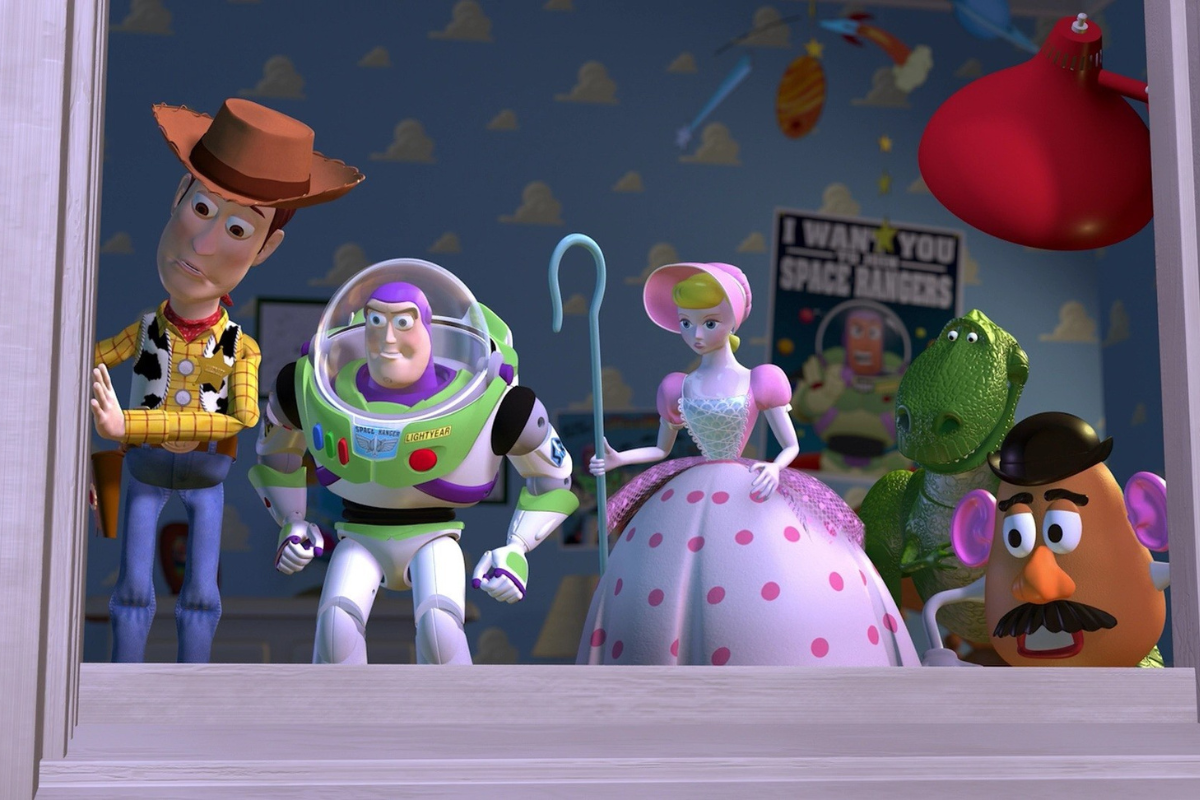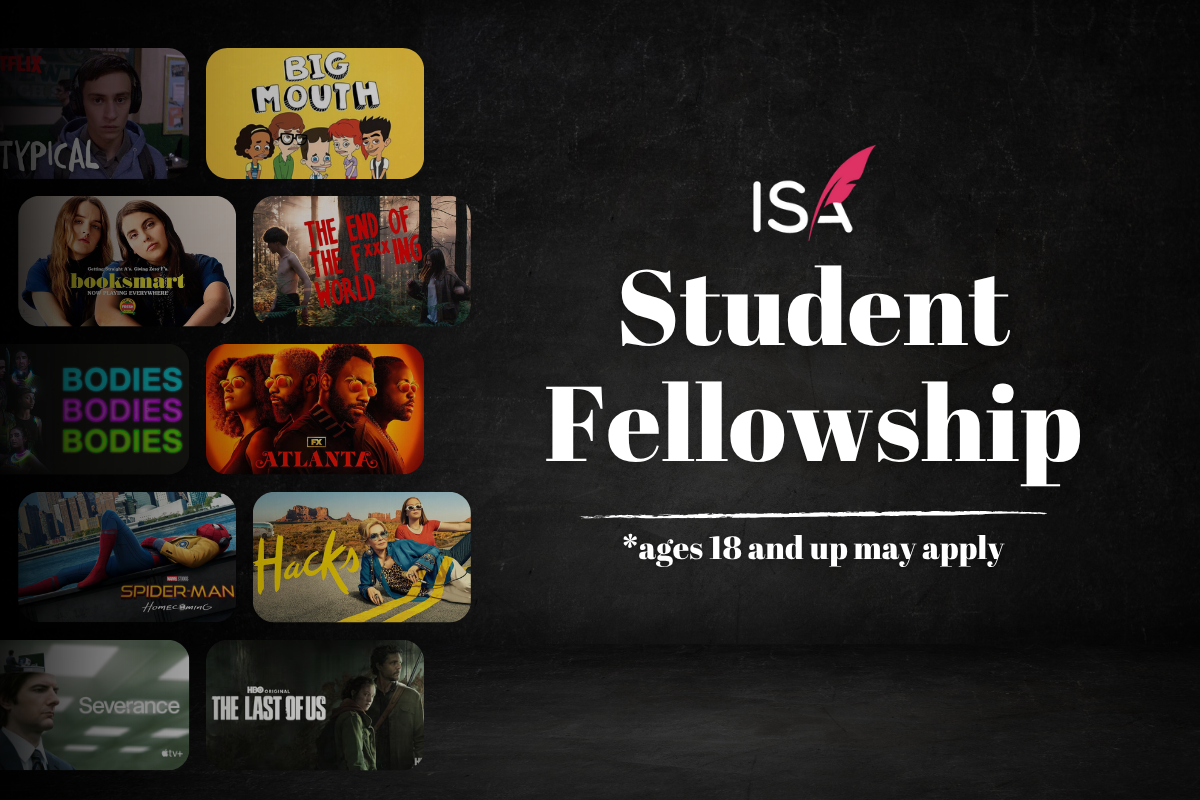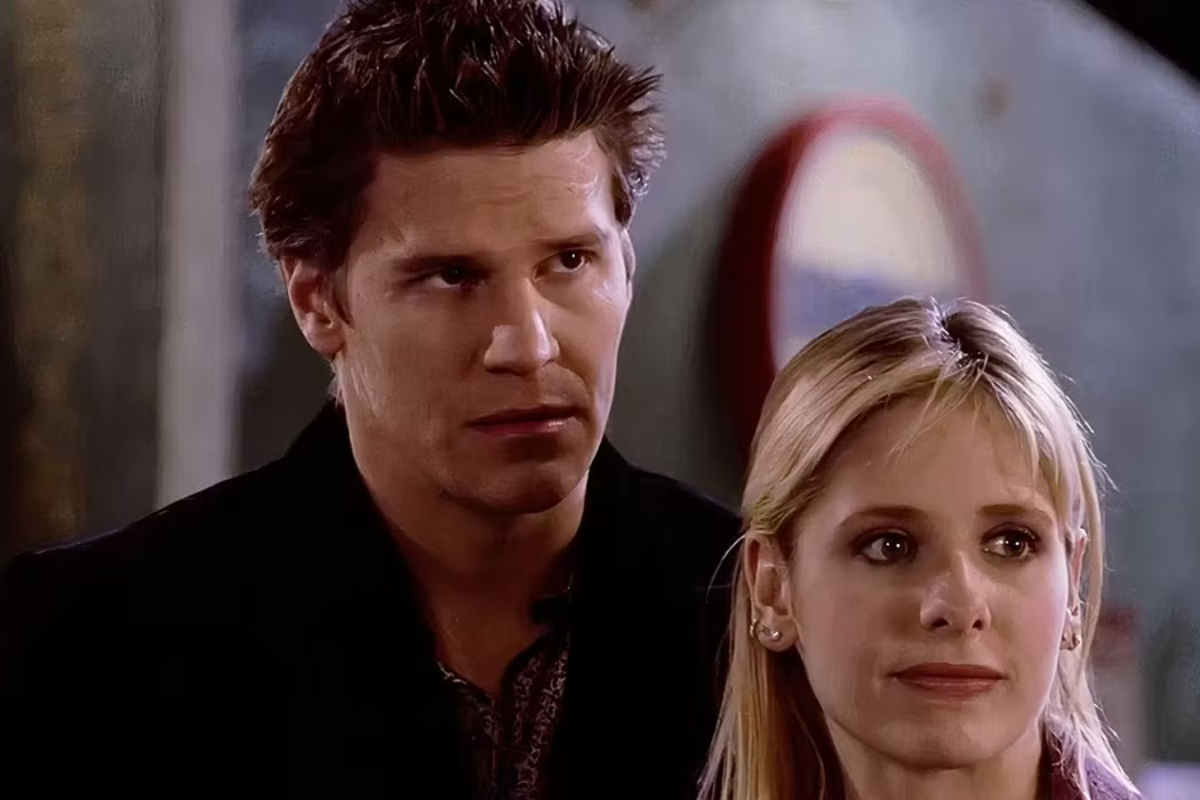WHY I WRITE: Gangsters and Golfers and Ghosts, Oh My! An Interview with Harold Ramis
Script looks back at our January 2006 publication when comedy legend Harold Ramis (Animal House, Caddyshack, Ghostbusters, Analyze This) chronicled his long and colorful film career and discussed what challenges lie ahead.
As we approach the 5th anniversary of the passing of comedy legend Harold Ramis (Animal House, Caddyshack, Ghostbusters, Analyze This), Script looks back at our January 2006 publication when Ramis chronicled his long and colorful film career.
For the majority of the screenwriting population, the dream of one day writing not just professionally, but also on their own terms, is just that—a dream. Some may wonder how writing legends with that type of clout emerge. How does one master this crazy craft and make it his own?
“I paid attention in English class,” says Harold Ramis, the brilliant mind behind many of the most classic comedies of the last three decades and, arguably, of all time. “I didn’t want to get it wrong, so my spelling and grammar were good. I followed instructions on how to write a good paragraph, and then all through school I kept doing it right and kept getting a lot of reinforcement for it.” A strong work ethic as an amateur equals a strong set of films as a professional. After graduating from Washington University in St. Louis, Ramis used his honed writing technique and a fresh set of ideas to earn himself some freelance writing work for the Chicago Daily News. However, it was not long after that he landed the job that most men, writers or not, would kill to have—an editor at Playboy magazine. “I took my published freelance stories to Playboy and got a job as an editor. I worked there for 18 months starting in the summer of 1968, and I left in 1970,” Ramis remembers fondly. “I was supporting myself within a year out of college.”
Technique will only get you so far, then your true talent for writing and filmmaking will be tested. Harold Ramis began finding success as a writer and actor on the once-famed SCTV, a sketch comedy show that burst on to the scene at the same time as Saturday Night Live. The comic actors and writers from Second City Theatre moved on from the stage to the screen together and made America laugh, all the while introducing some of the most unforgettable talent of their time. Soon enough, some of those talented folks were making not just ripples, but tsunami-sized waves in the entertainment industry; and one of the finer talents that washed ashore was a young man named Harold Ramis. He brought with him a screenplay, his first, titled Animal House.
A fraternity man in college, Ramis had an inside perspective on the Greek system and its idealistic ways of life on college campuses. He also knew how to exploit its lesser points and how to make it very funny. “When we (co-writers Douglas Kenney and Chris Miller) wrote Animal House, we actually said to each other, ‘This will be the most successful comedy of all time,’” says Ramis when asked if he expected to find overnight success with his first screenplay.
“I literally took the review in Time magazine to the bank and bought a house.” However, even with what seemed like instant success, Ramis kept his feet on the ground and his eyes on the greater mission—making a great script into a great film and, furthermore, into a great career. “I had already been ‘professionalized’ for 10 years before that.
I wasn’t concerned about losing my head. We all felt like we were extremely lucky to be getting what we thought we deserved so quickly, then the challenge became to not screw it up. When people will do anything you want, then the burden is on you to choose things that are worth doing.”
Not far around the corner was another smash hit that would make a place for itself on the list of the greatest comedies of all time: Caddyshack. This time, Ramis was taking on directorial duties as well and, once again, taking complete control of his work—seeing that the comedy was as tight as could be throughout. “Until you’re done shooting, you’re not done writing. Every take is an opportunity to rewrite. It doesn’t mean what you had was bad or failed; it means maybe it can be better than what you have.” This type of work ethic, reminiscent of his early days in elementary school, is the only way for Ramis to go about getting a screenplay into perfect form. “I’m constantly testing everything I do from the script stage. If I write five pages, I have someone from the office read it right away, maybe more than one person. The script gets read by a lot of people so you’ve already done some market research. You know where the rough spots are; you know what is satisfying people.”
“Until you’re done shooting, you’re not done writing. Every take is an opportunity to rewrite. It doesn’t mean what you had was bad or failed; it means maybe it can be better than what you have.”
Ramis was, and is, a funny guy. He knew nit, and at that point in his career most moviegoers did, too. However, he kept striving for something bigger, something out of this world, something, perhaps, supernatural. “Dan Akroyd had written a script. The characters weren’t vivid, but the setting was really strong and the comic edge of it was in place. It was this [great] idea of ghost janitors in New York. I don’t think anyone can argue with [the idea].” Well, not now at least, but at the time, the script needed some work and a lot of development. And when a funny script needs technical work, “Who ya gonna call?”
“I saw that even as a fantasy dealing with the supernatural, [the Ghostbusters script] was too supernatural. Half the events from the mid-point of the script happened on another plain of reality. I thought that what really created the comic edge was the juxtaposition of the mundane and the supernatural. So, we reshaped the script to begin, heighten and climax in Manhattan instead of leaving our world.”
However, there was another issue at hand: How do you convince an audience, half of which would never believe in ghosts or paranormal activity, to believe that this “business concept” of capturing ghosts could have legs? “It needed a point of entry for the audience. Danny’s script started with the Ghostbusters already in business as a franchise. These events were normal and happening everywhere. Rather than ask the audience to take that leap, which would make the film pure fantasy, why not use what we know now about the paranormal, show our first contact with that other world, and show the development of the Ghostbusters concept as a business? [That structure] captured the audience and took them along, rather than possibly leaving them in the dust right at the beginning.” If you remember the library scene, you’ll recall the nonchalant Bill Murray, unfazed by the threat of ghosts, having his first terrifying encounter with a haunting librarian. “Bill Murray remains a skeptic at the beginning and [that scene] makes believers of the whole audience because we experience it with him.”
Let the Ghostbusting begin! A successful sequel, a cartoon series, toy proton packs, action figures—the works. This time, Ramis had more than a funny movie; he had a franchise. But again, he prepared himself from the start—expecting that an idea like this could take off into much more. “We knew from the beginning we were hooked into something. There was just no way to avoid thinking that this didn’t have the potential to be one of the big comedies of all time.” Once again, he was right.
One might expect that a writer-director with sketch comedy grass roots and a cast of characters known for their improvisational style would leave some of the dialogue to chance and let some of the comedy fly. On the contrary, Ramis uses the unparalleled talent that worked on his films to the fullest advantage. He scripts his stories to a “T”; and, if something else takes form, he just watches it grow. “On Caddyshack, the film that contains the most improv of any film I’ve done, I had Bill Murray for a limited amount of time. His character was essentially without dialogue. It was supposed to be like Harpo Marx—he is just going to do crazy things. But, I thought since I have him, he might as well talk.” And talk he does, to himself in many cases. Most famously when he is the “Cinderella story” golfer, pretending to win a major tournament, golfing off of flowers outside the clubhouse, and commentating the action to himself. “All the script says in that scene is ‘Karl is outside of the clubhouse practicing his swing, lopping the tops off of sunflowers with a grass whip.’”
In addition to his long resumé of laugh-out-loud comedies, is his specialization in genre-mixing, a hot-button issue for many aspiring writers. Screenwriting books and many executives will tell you that it’s not a good idea for a young writer to try combining genres. Doing so causes a story to clash with itself, and oftentimes the formula is flawed. But, Harold Ramis nailed the recipe with Analyze This, and he feels that genre-mixing is a great way to be original with a screenplay and a story idea.
With Analyze This, Ramis took the frightening world of the Italian Mafia, complete with gunshots, brutal murders and a battle for power; but, underneath it all, is the main character who is having emotional problems and seeks the 24/7 counsel of an unwilling psychiatrist who is muscled into duty—let the laughs begin. “If you’re not taking chances, not giving the audience something new, then you’re up against every other ‘same’ thing. Do you know how many romantic comedies there are?”
The man has a point and has continued to do new things throughout his career, a trend that every aspiring writer should study. Give the audience something they haven’t had before. Ramis has done it again with his most recent film, The Ice Harvest. “The Ice Harvest is like Analyze This; people laugh as hard as ever, but it doesn’t take away from the thriller.” However, Ramis recognizes the value of mastering the screenwriting technique before venturing into mixed genres. “There is technical value. [Writing for mixed genres is] a developing craft.” Essentially, learn to swim in a pool before you dive into an ocean.
Ramis’ craft is not just writing in order to write, but writing for a reason, to reach a certain level of humor of the utmost quality. “I’d rather do nothing than something I don’t believe in. At Second City I learned to bite my tongue when I didn’t have something funny to say. No joke is better than a bad joke.”
Anyone who pays close attention to a favorite film may find certain subtleties that seem strangely out of place or simply unimportant, but after further inspection reveal true meaning. When asked if he ever takes these types of liberties, Ramis laughed and cited two examples: “I’m proud of some of the jokes that only two people laugh at, something so obscure. In Bedazzled, Elizabeth Hurley is teaching at an all-boy prep school in England, and she’s the sexiest teacher you’ve ever seen. She’s leading the boys completely astray, telling them not to neglect videogames, canceling homework; and on the blackboard behind her is a math problem that says: Xn + Yn = Zn solve when N is greater than 2. This is known as Fermat’s Enigma, and it took over 300 years to solve. The proof alone is about 200 pages long, with each page’s requiring a course to understand it. Yet, written underneath the problem on the blackboard, it says ‘Show your work.’ It’s a great math joke. In Multiplicity, Michael Keaton is a contractor building a housing development in Los Angeles, and the name on the billboard says ‘Vista de Nada,’ meaning ‘View of Nothing.’” Ramis has jokes for everyone, including scholars and bilinguals.
Truly a master of creating long-lasting comedy, Ramis points out several key elements necessary in creating material that generates more than hard laughs and box-office success, but also longevity through generations. “I think that every script needs to create its own set of rules, its own boundaries and limits, its own style, its own comic edge, its own shape. I’ve got to believe that if you’re not trying to do something new, then you have to question what can you expect from your work.”
“I’d rather do nothing than something I don’t believe in. At Second City I learned to bite my tongue when I didn’t have something funny to say. No joke is better than a bad joke.”
Ramis continues, explaining how he develops his own material so that it will last, “If I’m not working from assigned material, I just start thinking and thinking, referencing everything I’ve ever heard or learned on the subject, either alone or with co-writers. Things that are relevant start to stick. I make notes on anything that seems interesting. They could be something from the real world, history, an abstract idea, a line of dialogue, something anecdotal. Once I have enough information swimming together, it’s like the primordial soup where molecules start to form individual elements that aren’t related, and they start to attach themselves to other elements. Characters start to coalesce out of that set, story points and settings start to emerge, and you start to see the kind of narrative line that it’s going to have. If you’re going to steal, you don’t steal from commercial films because we’ve seen that already. You steal from Shakespeare or Chaucer or the Bible. If you’ve got something really timeless or really big, those are the things that have archetype and mythical resonance for the audience.”
Now, here he is, with the next generation of funny-folk writing and directing right behind him. What is it like to see the newcomers who have been watching and learning from him, coming into their own? “It’s gratifying that they keep mentioning me when they’re interviewed. I read an interview where Jude Apatow said [of his class of comedy writers], ‘We are all the spawn of Harold Ramis.’ Sounds great, I’ll take it.” At this point in any successful career, it can be a challenge just to find a new challenge. “I’m compelled by ideas that I think are good enough to invest my time in. When I’m writing, I’m writing something I want to direct, so I might be spending two years with it ... so it better be good. What really gets me going is an idea worth spending two years on.” Knowing that, The Ice Harvest will have to quench our appetite for Ramis-humor over the next year or so while he finishes his next project. But as we’ve learned, we should know to expect something completely original. “All I can do is to keep challenging myself to do something that I haven’t done before or haven’t seen before,” says Ramis, who can be sure that his multi-generational following will be waiting to laugh just as soon as he’s ready for us.
Editor's Note: Harold Ramis' daughter, Violet Ramis Stiel, wrote a touching and hilarious memoir on her life with her father—Ghostbuster's Daughter: Life with My Dad, Harold Ramis. What better way to honor her father's talent than by spending time learning more about his life.
Scriptmag.com is a participant in the Amazon Services LLC Associates Program, an affiliate advertising program designed to provide a means for sites to earn advertising fees by advertising and linking to Amazon.com and affiliated websites.







